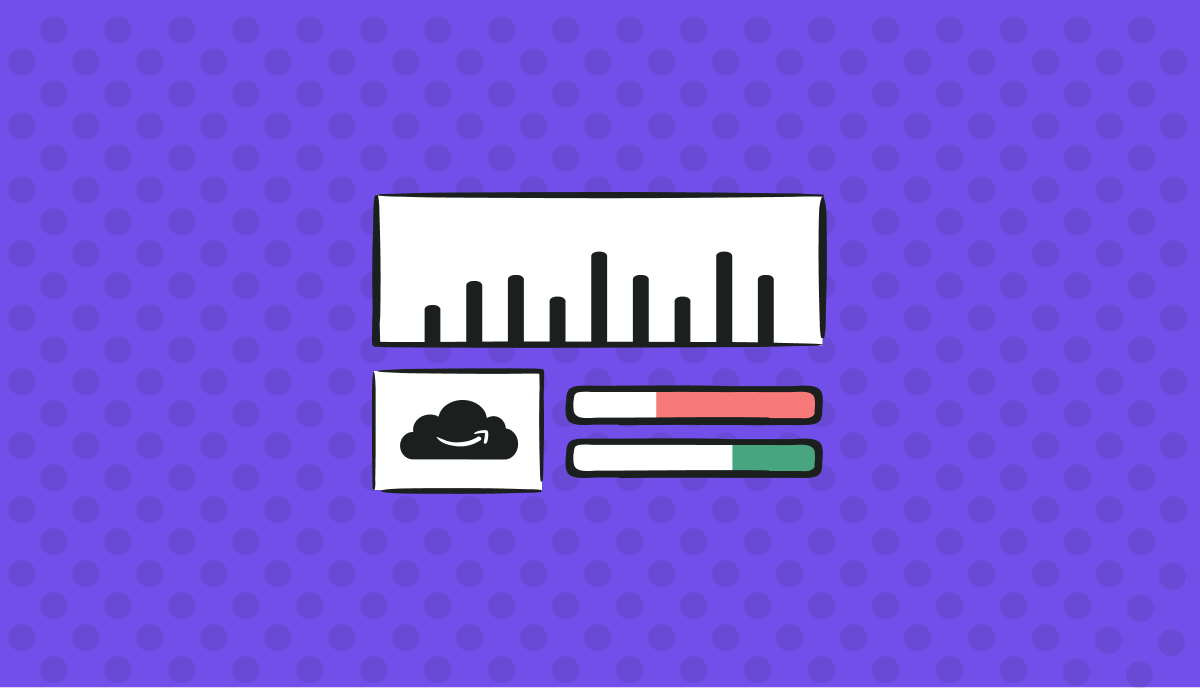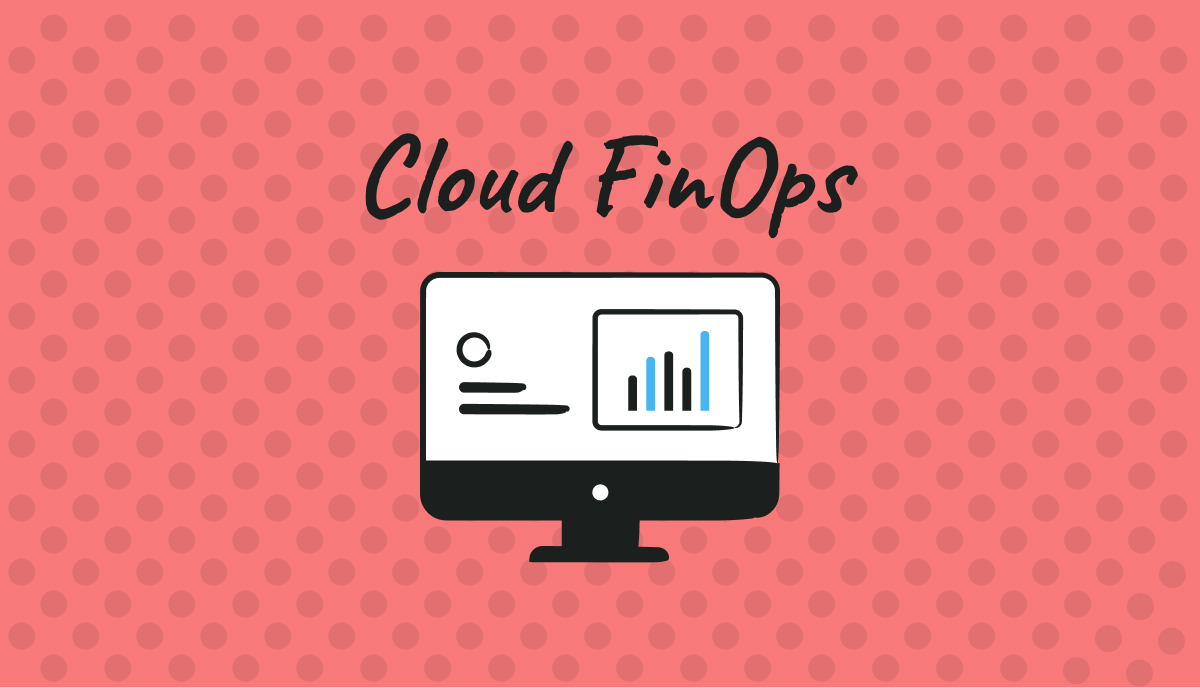
Table of Contents
- Use spot and Reserved Instances
- Reserved Instances
- Use S3 Analytics to Optimize Storage Costs
- Improve EC2 Auto Scaling Groups (ASG) Configuration
- Choose the Right Region
- Use Native and Third-Party Tools to Monitor Costs
- Final Thoughts
Amazon Web Services (AWS) is the leading cloud computing platform and often the biggest component of your monthly cloud bill.
And here's the thing. Since most Amazon services rely on compute resources provided by Elastic Compute Cloud (EC2), the cost of EC2 instances typically plays a central role in your AWS expenses.
That's why many cost optimization strategies revolve around reducing the cost of EC2 instances. For example, you can transition instances from on-demand to spot pricing or even reserve them for a set period of time to get a hefty discount from Amazon.
There are, of course, other practices and tools you can use to cut down on your AWS spending. Let's take a closer look.
Use spot and Reserved Instances
Typically, we deploy our services in either stateless or stateful manner.
Stateless services usually operate without being connected to any persistent storage and without holding critical data within the service itself. This means that even if we were to lose the service, it wouldn't result in any data loss.
In development and staging environments, the use of spot instances can significantly reduce instance costs.
Especially with the increasing presence of containers in our lives and the adoption of Kubernetes architectures, the utilization of spot instances has become more prevalent than ever.
One drawback of spot instances is that they're unreliable. If Amazon needs to allocate capacity to on-demand or reserved users, it terminates spot instances with a two-minute warning.
Although Amazon has introduced "rebalancing signals" to potentially provide earlier termination warnings, it is not a guaranteed feature.
To enhance reliability, an alternative option is to run spot instances in conjunction with regular on-demand instances within an Auto Scaling Group (ASG).
This ensures that at least a portion of the capacity in the group remains available even if spot instances are terminated.
Reserved Instances
Reserved Instances offer long-term cost savings, allowing you to reserve capacity for predictable workloads at a discounted rate.
If you have a robust system in place and a strong long-term plan, incorporating Reserved Instances will result in significant cost savings.
You have the option to reserve instances for a duration of 1 to 3 years. This will provide you with a discount ranging from approximately 50% to 90%. Not bad at all if you ask us.
Selling Idle Reserved Instances
Underutilized Reserved Instances have a tendency to drain your budget without you even noticing.
The good news is, AWS provides a Reserved Instance Marketplace, offering an opportunity to sell your unused Reserved Instances to other AWS customers in need.
If you find that you have reserved instances that are not fully utilized or are no longer needed, selling them can help you recover a portion of the upfront payment or hourly rates you paid for them. By selling these underutilized Reserved Instances, you can optimize your costs and potentially generate revenue from the unused capacity.
Eliminate Idle Instances
Idle instances can quickly become budget eaters.
To combat this, establish schedules for deactivating unused instances. Analyze your workload patterns and determine when instances are typically idle, such as during off-peak hours or weekends.
By configuring automation tools like AWS Lambda or CloudWatch Events, you can automatically shut down instances during these idle periods. This proactive approach minimizes unnecessary costs and maximizes resource efficiency.
Use S3 Analytics to Optimize Storage Costs
By using the S3 Analytics tool, you can get helpful suggestions for reducing costs. It recommends using lower-cost alternatives like S3 Infrequently Accessed (S3 IA), AWS Glacier, or AWS Glacier Deep Archive storage.
You can automate the transfer of objects to more cost-effective storage tiers by using lifecycle policies. Another option is to use S3 Intelligent-Tiering, which automatically analyzes and moves objects with uncertain or variable usage durations to the appropriate storage tier.
Deleting unused Elastic Block Storage (EBS) volumes is another effective way to save costs. EBS volumes are disk drives attached to EC2 instances, and they can keep running and incurring costs even after the instance is turned off.
To avoid unnecessary costs, make sure teams choose the "Delete on termination" option when using EBS volumes. This ensures that the EBS volume is deleted when the EC2 instance is terminated.
If this option wasn't selected, you can easily find available EBS volumes through Amazon CloudWatch or AWS Trusted Advisor. By using a Lambda function, you can automate the cleanup process and regain storage resources.
Improve EC2 Auto Scaling Groups (ASG) Configuration
EC2 Auto Scaling Groups (ASG) are a powerful tool for managing and automatically scaling groups of Amazon EC2 instances.
With features like health checks, customizable scaling policies based on application metrics or schedules, and the ability to add or remove instances based on predefined rules or application loads, ASGs are essential for cost-efficient EC2 fleet management.
To maximize cost savings, it's crucial to optimize the scaling policies of your ASGs. By carefully fine-tuning these policies, you can minimize costs during both scaling up and scaling down operations.
When scaling up, it's recommended to add instances in a cautious manner to ensure the application's performance remains unaffected. The goal is to strike a balance between scalability and maintaining optimal performance.
Conversely, when scaling down, the objective is to reduce the number of instances to the minimum required to handle the current application loads. This helps eliminate any unnecessary costs while still meeting the demands of your applications.
Monitoring scaling activity can be achieved through the describe-scaling-activity CLI command or the Auto Scaling Console, enabling you to stay informed about the performance of your ASGs.
By optimizing your EC2 Auto Scaling Groups, you can achieve peak performance and cost efficiency, ensuring your applications run smoothly while keeping expenses in check.
Choose the Right Region
Optimizing AWS costs requires careful consideration of different regions, as each region comes with its unique cost scale.
By taking into account the specificities of each region, you can pinpoint the most suitable option that aligns with your location.
Moreover, regions have a significant impact beyond just cost, affecting crucial factors such as latency and availability. It is imperative to delve into these aspects and weigh them carefully before making any decisions.
Use Native and Third-Party Tools to Monitor Costs
Monitoring your system is essential for various reasons. If you have effective dashboards and monitoring tools, you can easily keep track of important metrics.
For example, by observing low CPU and memory usage on your instances, you can optimize them and switch to more suitable instance types, leading to significant cost savings.
To create such a dashboard, you can use Finout AWS dashboards, which help you monitor your most important metrics.
But AWS offers powerful tools for cost optimization and monitoring, too:
AWS Cost Explorer: The Cost Explorer interface enables you to analyze costs, usage, and return on investment for AWS services. It provides a comprehensive view of data spanning the past 13 months and allows you to forecast future expenditures.
AWS Budgets: With AWS Budgets, you can establish and enforce budgets for individual AWS services. When budgets are exceeded or met, you can receive notifications or emails through the Simple Notification Service (SNS).
AWS Pricing Calculator: The Pricing Calculator allows you to assess estimated costs for different use cases on the AWS platform. It generates monthly cost estimates for all supported regions and helps you plan and explore pricing details and plans.
Final Thoughts
In the ever-evolving landscape of AWS, cost optimization becomes a critical component of success.
By utilizing spot and reserved instances, selling unused Reserved Instances, establishing schedules for deactivating idle instances, optimizing storage costs, and fine-tuning EC2 Auto Scaling Groups, you can unlock the full potential of AWS while keeping costs under control.
Embrace these techniques, iterate, and refine your cost optimization strategies to achieve continuous improvement. With these tools in your arsenal, you're poised to navigate the AWS cloud with financial prowess and achieve optimal results.








